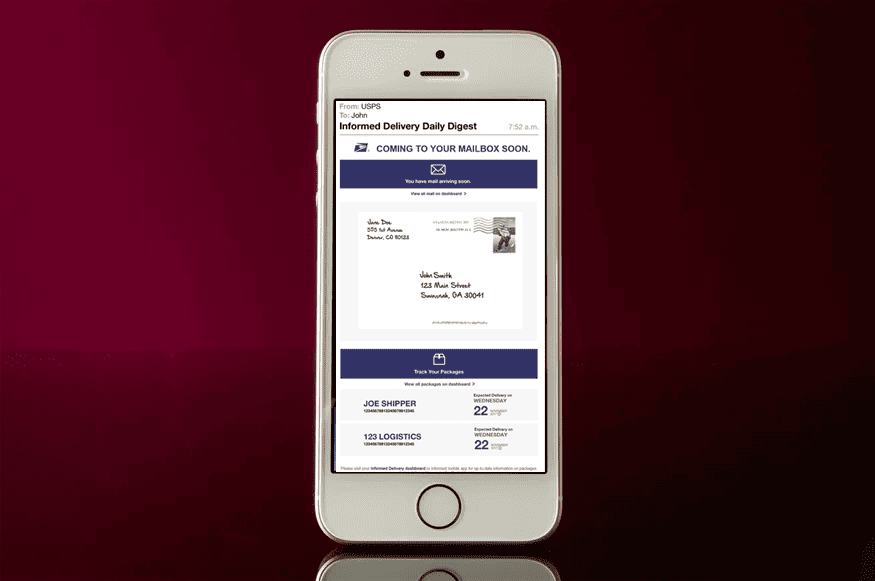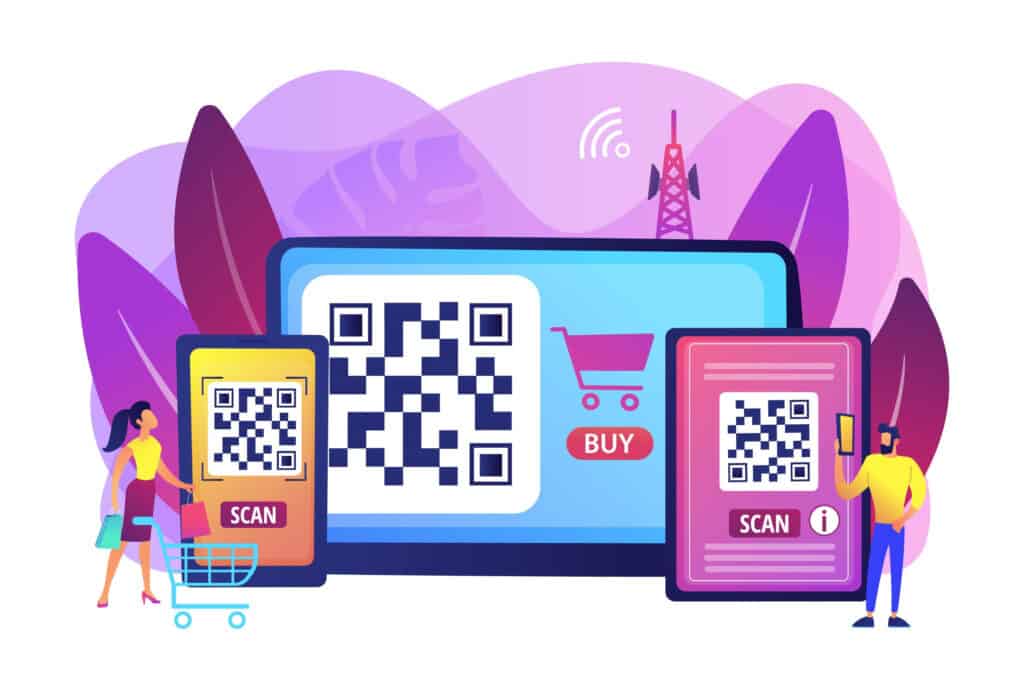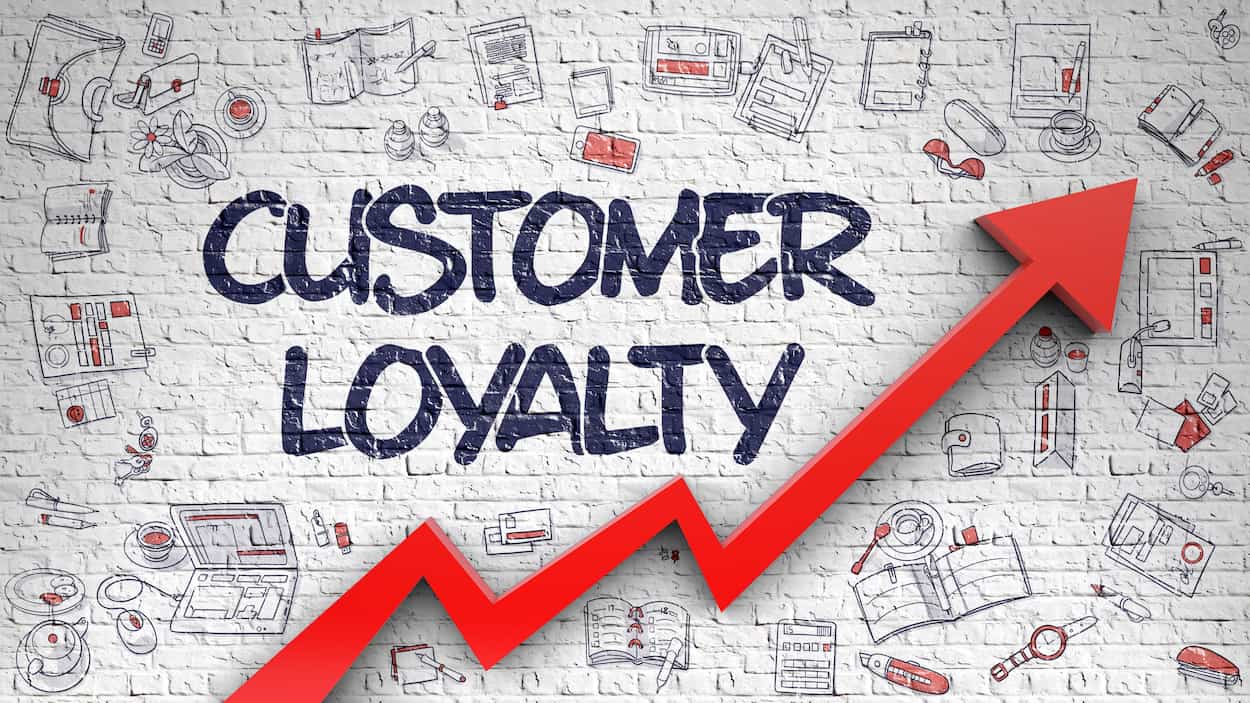
In today’s marketing landscape, the importance of data-driven marketing cannot be overstated. Gone are the days of relying solely on intuition and guesswork to make marketing decisions. Instead, successful businesses harness data’s power to drive their marketing strategies and achieve remarkable results. What are some of the benefits of building your marketing strategy on data?
1. Precision Targeting
Data-driven marketing allows businesses to target their audience precisely. This precision ensures that marketing efforts reach the right people at the right time with the right message. As a result, businesses can maximize the impact of their marketing efforts and minimize waste.
2. Informed Decision-Making
Data provides insights into customer preferences, trends, and market dynamics. With this information, businesses can make more informed decisions about product development, pricing, promotion, and distribution. This reduces the risk of costly missteps and enhances overall business performance.
3. Improved Customer Engagement
Data-driven marketing enables businesses to engage with customers on a deeper level. By analyzing customer data, companies can gain insights into individual preferences, purchase history, and behavior. This allows for personalized communication and offers, which resonate more effectively with customers, resulting in higher loyalty and increased customer lifetime value.
4. Cost Efficiency
Businesses can significantly increase cost efficiency by targeting the right audience and refining marketing strategies based on data insights. Data-driven marketing reduces spending on ineffective campaigns and helps allocate resources more effectively. This cost-conscious approach leads to higher returns on marketing investment.
5. Competitive Advantage
Businesses that leverage data effectively can outperform competitors by delivering more relevant and compelling marketing messages. This differentiation can lead to increased market share and customer loyalty.
Businesses that embrace data-driven marketing have a distinct advantage in a world inundated with data. Companies can succeed in today’s fast-paced and ever-changing business environment by leveraging data for precision targeting, informed decision-making, improved customer engagement, cost efficiency, and competitive advantage. No wonder data-driven marketing is the cornerstone of modern marketing strategies and a pathway to remarkable marketing success.

Did you know that the United States Postal Service offers a free service that gives you an additional digital touch in your postal marketing? This extra touch boosts response rates and increases marketing effectiveness. Did we mention that it’s free?
This service is called Informed Delivery. It uses the scanned images of the mail taken during regular postal processing and inserts them into a daily email digest delivered to the postal customer every morning. Package tracking information on Priority Mail, Priority Mail Express, and other trackable parcels is also provided. Images can be viewed on the user’s USPS online dashboard or in the mobile app, as well.
While Informed Delivery has been around for over five years, many businesses still don’t know about it.
Currently, 56+ million people are signed up for Informed Delivery, and the digest emails have open rates of 65.2%. Most Informed Delivery users check their digests first thing in the morning, so recipients can see your offers on their way even before the physical mailpieces arrive.
With a little extra time and effort (but still free), businesses can mail what the USPS calls “interactive campaigns.” In interactive campaigns, you can add full-color advertising images and clickable links, allowing recipients not just to see but to respond to your offers even before the physical mailpiece hits. You can also check clickthrough rates and other statistics to see how your campaign is working.
How do you maximize your mailpiece for Informed Delivery?
- Keep your design uncluttered and with enough contrast so that your pieces are readable even as grayscale images.
- Make sure that the key elements of your offer are visible on the addressed side of the piece.
- Consider using the full-color image and landing page options in the interactive campaigns.
USPS Informed Delivery is a free service, and you don’t have to optimize your designs in order for it to benefit you. But it sure works better if you do.
Want to learn more? Contact sales@imagemarkonline.com

In the ever-evolving marketing world, getting caught up in the digital buzz is easy. However, there’s a timeless charm to a well-executed print campaign that captures attention and makes a lasting impression. Print has unique qualities that can elevate your direct mail efforts. Let’s look at five elements that make print special.
1. Texture: The Tactile Experience
One of the most alluring aspects of print is its tactile nature. The feel of a quality paper stock can engage the senses in a way that digital can’t replicate. When recipients run their fingers over textured paper, it adds depth and memorable character to your message.
2. Scent: Evoke Emotions
Print has the unique ability to incorporate scents, turning a piece of mail into a multi-sensory experience. Infusing your direct mail piece with a relevant fragrance can evoke powerful emotions and trigger memories. For example, imagine the power of a bakery sending out mailers with the delightful scent of freshly baked bread!
3. Color: Vibrant and Impactful
Print allows you to use a rich palette of colors to capture attention and convey your brand’s personality. Unlike the limitations of digital screens, print can reproduce colors with a vividness and precision that captures emotion, not just attention.
4. Incorporation of Video Through QR Codes
QR codes enable you to bridge the gap between print and digital by providing a direct link to video content. This interactive element allows recipients to engage with your message dynamically, providing a unique blend of the physical and digital worlds. QR Codes can do more than send people to web pages. They can launch emails, make phone calls, and add events to recipients’ marketing calendars.
5. Dimension in a 3D World
Print isn’t confined to a flat screen. It has depth. Die-cutting, embossing, or even folding techniques can create dimensional elements that demand attention. When your direct mail piece pops out of the envelope or unfolds unexpectedly, it surprises and engages the recipient, making your message unforgettable.
Even in today’s digital world, direct mail holds a special place in buyers’ hearts. You can impact recipients at multiple levels by leveraging these five key attributes. So, don’t forget about direct mail next time you create your marketing calendar.

The global pandemic has had a profound impact on the world of consumer marketing, and one of these impacts has been to bring QR codes more into the mainstream. With consumers increasingly comfortable using QR codes, businesses can confidently leverage this marketing tool, making it more straightforward for customers to gain information, access coupons, and reply to offers.
QR codes are those boxes of black-and-white squares you see on posters, on the backs of business cards, and in the drive-through windows. When scanned with a mobile phone, they connect people directly from the world of print to the world of digital. While most people associate QR codes with taking the user to a web page, they can do much more.
When scanned, QR codes can launch a web page, play a video, make a phone call, add a calendar event, launch a survey, initiate a mobile payment, send an email, and much more.
QR codes are free to create and simple to use, and suddenly, they are everywhere.
Faster, Easier World for Customers
QR codes (short for “quick response” codes) have been around for nearly two decades. While traction has been gaining, adoption took off during the pandemic thanks to the promise of touchless interaction. Now QR codes are here to stay. Touchless interaction is still a benefit, but more importantly, QR codes make things faster and easier for consumers.
Consider just a few of the ways that QR codes are being used today:
- Restaurants are adding QR codes to menus or table plaques, allowing patrons to browse their dining options and place orders without waiting for a server. QR codes enable restaurants to update their menus or daily specials in real time.
- Hotels are adding QR codes to enable contactless check-ins, allowing customers to place in-room orders and control lights or air conditioning.
- Sports, music, and travel lovers no longer need physical tickets to enter their favorite venues. From high school sports to rock concerts and art events, patrons show the QR codes on their phones.
- Medical facilities use QR codes to let patients check in for appointments and access health information on posters.
- PayPal, Venmo, and other payment apps have launched QR code mobile payment systems, making payments even to small businesses as easy as point and tap.
Want to learn how to use QR codes to make your customers’ lives easier? Just ask!

What does it take to create customer loyalty, the kind of loyalty that makes customers stick with you, even when their favorite sales representative, hair stylist or financial advisor moves on?
Here are some tips from the experts.
1. Know your customer base. Customer bases are not homogeneous. They are made up of different demographics, with different needs and with different motivators for shopping with you. Profiling your customers can tell you a lot about how to keep them. When was the last time you did a customer survey or conducted a focus group?
The more you get to know the unique makeup of your customer base, the more you are able to adjust products and services to respond to their unique needs and the more likely you are to hang onto their loyalty.
2. Make it personal. Shift from mass mailings and generic communications to personalized print communications as much as possible. This should go beyond “Dear <<name>>” and include content driven by demographics, demonstrated preferences or past purchase history. The goal here is not just to let your customers know that you know their names, but to increase the relevance of your communications to their lives.
3. Spread the communication around. Some companies assign each customer a specific customer service representative or sales consultant. This creates a special relationship between customer and sales rep that can be invaluable. The downside is that this relationship can become so valuable that, should the sales rep leave the company, your customer might be willing to leave with them. For this reason, encourage your customers to have multiple contact points within your company.
4. Increase the frequency. Stay in communication with your customers on a regular basis, not just when there is a special promotion or event. This is the idea behind most drip marketing campaigns. They help develop a relationship that creates a value beyond price and convenience and keeps your company top of mind.
5. Reinforce and reward loyalty. When customers are loyal, let them know that you appreciate it. Then reward them for that loyalty. Send them special “loyal customer” discounts, personalized to their unique habits and preferences whenever possible.
Retaining customers takes effort. It requires a customer retention plan and an intentional, focused effort to keep those customers you’ve worked so hard to have. What’s your plan?

Understanding buyer psychology is key to grabbing consumers’ attention and getting people to buy. The 6 Principles of Marketing Persuasion by Dr. Robert Cialdini is one of the most influential models in this approach. Cialdini’s six principles—scarcity, reciprocity, authority, social proof, liking, and consistency—can help boost results and get customers to act quickly.
Let’s take a quick look at each one:
1. Scarcity. People want it more when something is in short supply and are more likely to act quickly. This is why marketers use messaging such as “Offer by invitation only!” or “Only for a limited time!” Offering free shipping if shoppers order within the next 20 minutes can increase checkouts by up to 300%.
2. Reciprocity. The principle of reciprocity is when marketers offer something of value, such as a gift or sample, to customers right out of the gate. This triggers the natural desire of customers to give back in kind (reciprocity). It’s why nonprofits put personalized notepads and address labels in fundraising envelopes — because it works.
3. Authority. Authority uses the demonstration of expertise to inspire trust in customers. Authority can be established through external sources such as press coverage or third-party endorsements. It can also be established through internal content like blogs, whitepapers, case studies, or interviews. By building authority, businesses can create credibility and increase the likelihood of customers responding to offers.
4. Social proof. Social proof relies on peer influence to increase credibility and trust among potential customers. This could include customer testimonials, displaying reviews or ratings, showing celebrity endorsements, or featuring influencer posts.
5. Liking. The principle of “liking” states that people are more likely to comply with the requests of someone they like or identify with. For example, popular influencers sharing their experiences and stories about using a company’s products is more likely to resonate with customers than regular advertisements.
6. Consistency. People want their beliefs to be consistent with their values. If buyers see themselves as good parents, for example, they are more likely to respond to messaging that positions them this way. “As a great mom, you know how important it is to…”
These are essential principles, but it may take some testing until you get the messaging right. Subtle changes can make a big difference, so be patient. Keep testing until you get a winner.

When a shopper walks into the store, even if they aren’t looking for something in your product category, the proper packaging can entice them to make a purchase they hadn’t planned. That’s why packaging should be considered part of your marketing toolbox. Here are five ways to use product packaging to stand out and create competitive differentiation.
1. Great design matters.
The front of your container is your face to the market. Whether a label or a folding carton, bright colors, glossy coatings, and specialty techniques like embossing and foil can stop shoppers in their tracks, and creative design techniques, such as vintage effects, can grab attention, too. Get creative!
2. Emphasize sustainability.
With more and more consumers looking to buy sustainable products, the packaging is a great way to show that your brand is committed to the environment. Use recycled materials, biodegradable packaging, and reusable packaging, then promote your efforts on the package where shoppers can see it easily.
3. Target specific audiences.
Did you know that you can break your packaging into target segments just as you do with other marketing materials? You might create complementary packaging for different audiences—one for men and one for women. Or, if you sell into areas with a high percentage of Spanish-speaking consumers, you might print a portion of your packaging with messaging in Spanish and English.
4. Create personalized options.
With today’s digital production, packaging can be printed in runs as short as one. Allow customers to purchase your hand-ground coffee in bags with their names on them (for example, “Joan’s Favorite Breakfast Mix”) or with the names of friends and family to use as gifts. Encourage businesses to brand their products for corporate events.
5. Add something extra.
Include something fun and surprising inside the package. This might be a coupon for their next purchase, a free sample of a related product, or a funny refrigerator magnet. Customers appreciate and remember this extra effort.
Packaging is one of your most essential marketing tools, so use it to your advantage. With a bit of creativity, you can surprise and delight your customers, build brand loyalty, and keep your customers coming back.

In today’s times of uncertainty, it can be challenging to know how to strike the right tone. While consumer spending remains strong, there is still much uncertainty about the future. Some Americans are doing quite well. Others are still struggling. For marketers, this means crafting messaging that is both optimistic and sensitive. It can be a tricky balance. Here are five tips for getting it right.
1. Exude confidence.
During difficult times, people flock to leaders who exude confidence. Brands can inspire, motivate, and make people feel that everything will be okay. Reach out using the theme, “We’re here to help.”
2. Invest in social and environmental justice.
Consumers like to align with brands that “do good.” Promote your support for socially or environmentally conscious organizations and let people know about it. For example, a SheerID study found that, during the pandemic, 68% of respondents wanted brands to donate to programs that provided direct support for medical workers.
3. Offer a helping hand.
While the U.S. economy continues to grow, this is still a time of struggle for many. Offer deferred payments, ideas for lowering expenses, and so on. Even if your customers don’t need the help themselves, this kind of care for others builds brand equity that pays off in the long run.
4. Show off your expertise.
This is a great time to share meaningful expertise with your customers. Think “Top 5 Ways to Save on Lawn Care” or “3 Plumbing Fixes You Can Do Yourself.”
5. Make your customers’ lives easier.
When the world is uncertain, consumers want to feel that they at least have control over their own homes and families. Position your products in terms of how they can help your customers make lives safer and easier, even in small ways. “Let us help you save 10% on your home electric bill,” or, “We’re offering FREE delivery of pool chemicals all summer long so you can relax at home!”
Brands can play a positive role in helping their customers through uncertain times. Striking the right tone tells your customers that you are paying attention… and that you care.

If you aren’t already using an e-commerce portal to archive, order, and manage your print materials, you are leaving money on the table. How? Let’s look at five costs associated with manual print ordering and management and how you save money using an online storefront instead.
1. Administrative time. How long does it take one of your employees to place orders for 1,000 copies of your product brochures, 500 business cards for six employees, and 5,000 full-color direct mail pieces? It’s not just the time it takes to place each order. It’s what these employees are not getting done while they do.
2. Outdated inventory. How much inventory do you waste yearly because you order in large quantities to keep the cost down, then throw out because the materials go out of date? Through an online storefront, you order what you need, as you need it, in smaller quantities. If you are warehousing these materials, you will also save money on warehousing.
3. Errors. The branding elements are locked in when you approve and centralize your materials in an online storefront. No matter who places the order, at what time of day or night, your brand colors won’t get messed up. You won’t use the wrong image, last month’s offer, or an outdated logo. You save money on remakes, brand erosion, and embarrassment.
4. Design. Repeat jobs can be transferred to templates while still allowing you to customize, update, and segment them without sacrificing creativity. You can handle these jobs in-house without compromising your brand by using templates.
5. Faster turnaround. As the saying goes, “Time is money.” By starting with a brand-approved template, you can turn around projects in hours rather than weeks, even when you need to make changes. This allows you to respond more quickly to market changes (such as moves by competitors) and make your marketing more agile.
These are some of the top benefits of digital storefronts, but they are by no means the only ones. How much money could you save by setting up your own?

Think you can’t afford direct mail because you’re a local business with a tight budget? Think again. With USPS Every Door Direct Mail (EDDM), you can send targeted direct mail for a postal cost of $.20
or less per piece. Even target addresses by age, household income,
or household size.
Use EDDM for just the right audience:
- Grand openings
- Local sales and promotions
- New locations
- Discounts and coupons
- Local events and more
Contact us to find out how!
